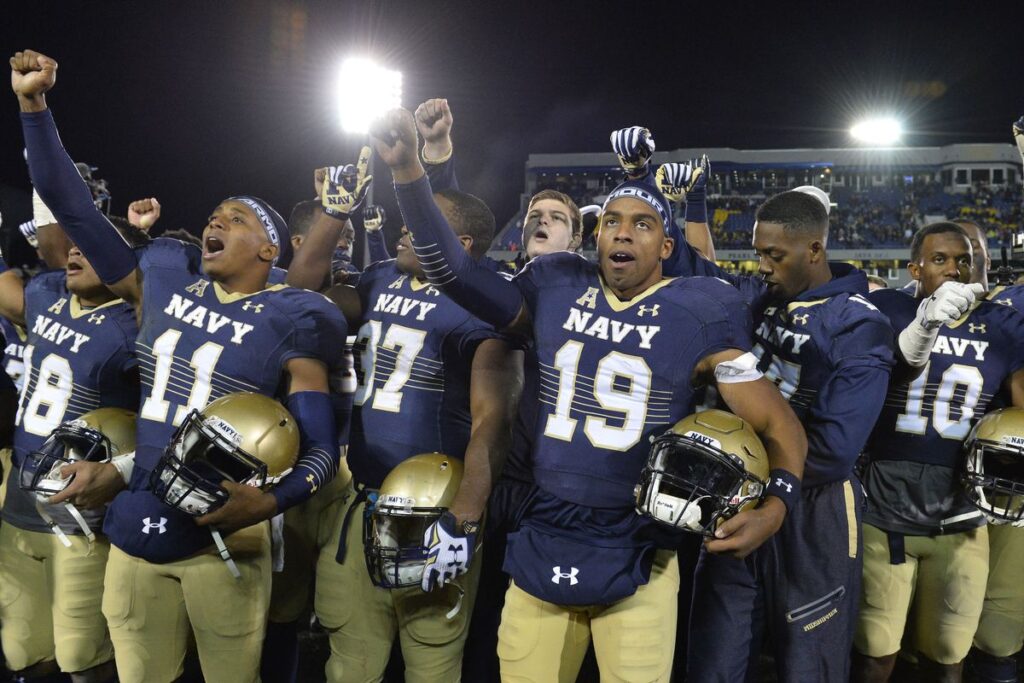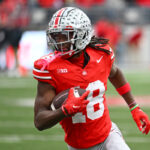Team History
The Navy Midshipmen football team’s history reflects a storied tradition of competition, discipline, and excellence that mirrors the values of the Naval Academy itself. Established in 1879, the program has evolved significantly from its early days of informal competition to becoming a cornerstone of college football, known for its spirited rivalry games and commitment to the physical and mental development of its midshipmen. Over the decades, the team has experienced periods of dominance, including notable bowl game victories and a national championship in 1926, underscoring its status as a formidable force in college athletics.
The team’s resilience is further illustrated by its ability to navigate through periods of transition and change, especially evident in the coaching shifts that have brought new strategies and revitalized the program at different times. From the early influence of coaches like Paul Johnson, who introduced the triple option offense, to the tenure of Ken Niumatalolo, the program’s most winning coach, Navy football has continually adapted to the challenges of competitive college football, maintaining its relevance and competitiveness.
Foundation and Early Years
The foundation of Navy football dates back to the late 19th century, marking the beginning of what would become one of the most enduring traditions of the United States Naval Academy. The early years were characterized by a developing understanding of the game, with the team quickly establishing itself as a competitive entity within the collegiate landscape. The significance of the team’s early establishment lies not only in its competitive achievements but also in fostering the spirit of teamwork and leadership among its participants, qualities that are central to the academy’s mission.
This formative period laid the groundwork for the evolution of Navy football, setting the stage for future achievements and establishing foundational rivalries, most notably with the Army. The annual Army-Navy game, first played in 1890, quickly became a centerpiece of the academy’s athletic calendar, symbolizing the deep respect and rivalry between the two service academies. These early years, marked by growth and competition, set the tone for the program’s enduring legacy.
Notable Early Achievements
One of the most significant early achievements of Navy football was winning the national championship in 1926, a milestone that cemented the program’s place in collegiate football history. This era of success showcased the team’s ability to compete at the highest levels, earning recognition and respect within the college football community. The achievements of the team during this period were not just about wins and losses but also about building a legacy of excellence and honor that reflected the academy’s values.
Beyond the national championship, the early years of Navy football were filled with moments that contributed to the rich tapestry of the program’s history. Victories over rival teams and participation in significant bowl games helped to establish Navy football as a symbol of competitiveness and perseverance. These notable achievements in the team’s formative years laid a solid foundation for the generations of midshipmen who would follow, aspiring to contribute to the storied tradition of Navy football.
Periods of Change
The history of Navy football is marked by several periods of change, each characterized by coaching transitions and shifts in team strategy. These periods were crucial in redefining the team’s identity and approach to the game. The transition from George Chaump to Charlie Weatherbie, and later to Paul Johnson, illustrates the program’s adaptability and willingness to embrace new strategies to remain competitive. Under Johnson’s leadership, the introduction of the triple option offense marked a significant strategic shift that would define Navy football’s style of play for years to come.
Each era of change brought with it challenges and opportunities. The hiring of Ken Niumatalolo in 2007, for example, represented a continuation of the success achieved under Johnson, further solidifying the triple option as a hallmark of Navy’s game. Niumatalolo’s tenure saw continued success against service academy rivals and significant victories that contributed to the program’s prestige. These periods of transition are a testament to the program’s resilience and its ongoing commitment to excellence, both on and off the field.
Championships and Achievements
Navy football’s history is adorned with numerous championships and achievements that highlight the program’s success over the years. The pinnacle of these achievements came in 1926 when Navy was recognized as national champions, a testament to the team’s excellence and competitive spirit. Beyond national recognition, the program has consistently competed for the Commander-in-Chief’s Trophy, awarded to the service academy with the best record in games among the three schools. Navy’s success in these competitions underscores its dominance among service academies and its commitment to honor, courage, and commitment on the football field.
In addition to the national championship and Commander-in-Chief’s Trophies, Navy football has made numerous bowl game appearances, securing victories that have bolstered the program’s reputation and brought pride to the Naval Academy. These achievements are not merely reflective of athletic prowess but also of the leadership, teamwork, and perseverance that are hallmarks of the Navy football program. Through its successes and challenges, Navy football continues to exemplify the best of collegiate athletics and the values ofthe United States Naval Academy.
Current Roster
The Navy Midshipmen football team’s current roster exemplifies a wide range of talent, with student-athletes from across the United States coming together with a common purpose. These individuals, each with their unique backgrounds and skills, are united by their commitment to excellence, both on the football field and in their academic pursuits. The roster is a blend of experienced upperclassmen and promising underclassmen, all of whom are dedicated to contributing to the team’s success. The diversity and depth of the roster ensure that the team remains competitive in the American Athletic Conference, showcasing the resilience and adaptability that are characteristic of Navy football.
The coaching staff’s role in recruiting and developing talent is critical to maintaining the high standards of Navy football. By focusing on the character, leadership, and physical abilities of potential recruits, the staff ensures that the roster is not only talented but also embodies the values of the Naval Academy. This meticulous approach to team composition has been a key factor in the program’s ability to compete at a high level, reflecting a broader commitment to excellence that defines the academy.
Management and Coaching Staff
The management and coaching staff of the Navy Midshipmen football team play a pivotal role in the program’s success. Following the tenure of Ken Niumatalolo, who served as head coach from 2008 to 2022, Brian Newberry took over the reins in 2023, bringing a fresh perspective and new strategies to the team. Newberry’s leadership, combined with the expertise of his coaching staff, is focused on maximizing the potential of each player and fostering a team culture built on discipline, hard work, and mutual respect. This coaching philosophy is instrumental in preparing student-athletes for success, both on the field and in their future careers as naval officers.
The coaching staff’s responsibilities extend beyond game-day strategy and player development. They are also charged with instilling the values of the Naval Academy in their players, ensuring that the team exemplifies the highest standards of conduct and sportsmanship. This holistic approach to coaching contributes to the development of well-rounded individuals who are prepared to lead and serve. The commitment of the coaching staff to the personal and professional growth of their players is a testament to the program’s dedication to producing leaders of character for the Navy and the nation.
Home Stadium Information
The Navy-Marine Corps Memorial Stadium, located in Annapolis, Maryland, is the proud home of the Navy Midshipmen football team. This iconic stadium not only serves as the venue for thrilling college football games but also stands as a tribute to the courage and dedication of Navy and Marine Corps personnel. With a seating capacity that accommodates tens of thousands of fans, the stadium provides an electrifying atmosphere for home games, especially the storied Army-Navy rivalry match. The facility is equipped with modern amenities, yet it retains a sense of history and tradition that is deeply cherished by the Naval Academy community.
Beyond its role as a sports venue, the Navy-Marine Corps Memorial Stadium is a living memorial, with its façade adorned with plaques and memorials that honor the service and sacrifice of Navy and Marine Corps members. This unique aspect of the stadium serves as a constant reminder of the values and heritage of the Naval Academy, making it a fitting home for the Midshipmen football team. The stadium’s location in Annapolis, the historic heart of the Naval Academy, further enhances the sense of tradition and pride that defines Navy football, making it one of the most unique and revered venues in college sports.
-
*********** ***** ******* *** ***** ** ************ **** ********* *****dd.mm.yyyy 00:00 PM
-
****** *********** **** ** ***** ****** *** **** *** ******: ********* *** ******* *** ****'* ****dd.mm.yyyy 00:00 PM
-
*********-***** ********: **** 6 **** *** ***** *** * ********* **** 7dd.mm.yyyy 00:00 PM
-
**********-************ *******: ****** ****ć, ******* *******, *** * ********* ********** ********dd.mm.yyyy 00:00 PM
-
********* **** ********* ** *** ***: ********* *** ********* ** ****** ******** **. *** *** *****dd.mm.yyyy 00:00 PM
-
****************** ******* **********: *** ********' **** ****dd.mm.yyyy 00:00 PM







